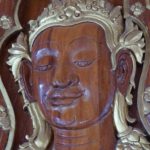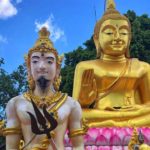Buddhist Prayer Beads (Rosary) in Thailand
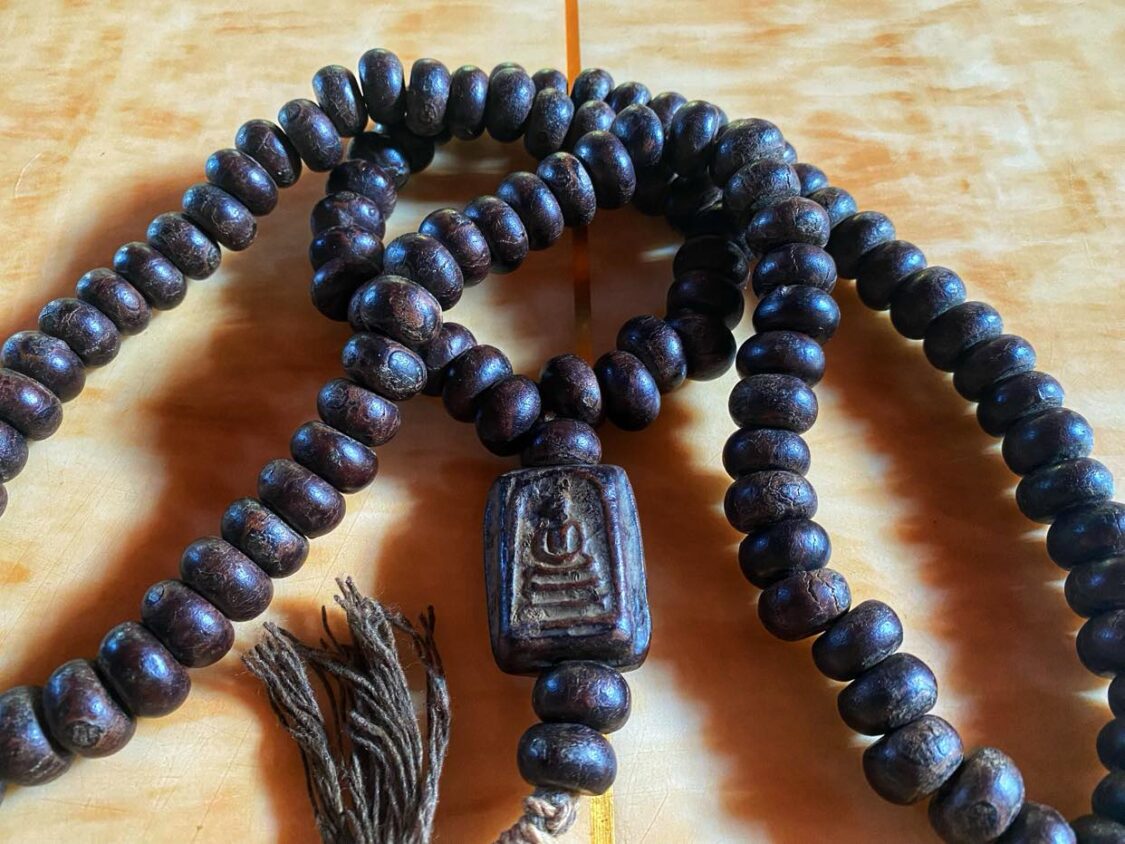
In Thailand, the use of “rosary” beads for prayer and meditation is common among Buddhist monks. However, their use in meditation among the Thai people occurs only among the most devoted of the Kingdom’s 67 million Buddhists.
Thais frequently use prayer beads as a personal talisman (much like they use a sacred amulet). They will wear the rosary as a necklace or bracelet, or place them inside their cars or homes.
While some Thais may view the beads as a symbol of their faith and a reminder of their spiritual journey, most view the rosary as a sacred talisman to protect against misfortune and bestow good luck.
According to legend, the monk Somdej Phra Noparat (สมเด็จพระนพรัตน์) of Wat Pa Kaew (วัดป่าแก้ว) presented King Naresuan the Great (1555-1605) powerful prayer beads to wear during his successful fight to save Siam from a Burmese attack. When he died years later from illness, it’s said he was wearing the beads around his neck.
The origin of Buddhist prayer beads, known as lôok bprà-kam (ลูกประคำ) in Thai, can be traced back to ancient India, where Buddhism originated. Outside of Thailand, they often are called “mala beads”.
In Sanskrit, the word “mala” means “garland”. The earliest known use of mala beads can be found in the ancient Indian scriptures, known as the Jatakas, which describe the life and teachings of the Buddha.
The symbolism of mala beads is deeply rooted in Buddhist philosophy and cosmology. Each bead represents a mantra or prayer, which is recited as the practitioner moves from one bead to the next. This repetitive motion helps to calm the mind and focus the attention, allowing the practitioner to enter a deep state of meditation.
In Thailand, traditional mantras that originated from Buddhist scripture are recited, as well as other mantras which have been developed by well-known Thai monks, such as Luang Phor Lersi Lingdam (หลวงพ่อฤาษีลิงดำ) of Wat Tha Sung and the Sakon Nakhon monk Luang Phor Nun Suwichayo (หลวงพ่อหนุนสุวิชโย).
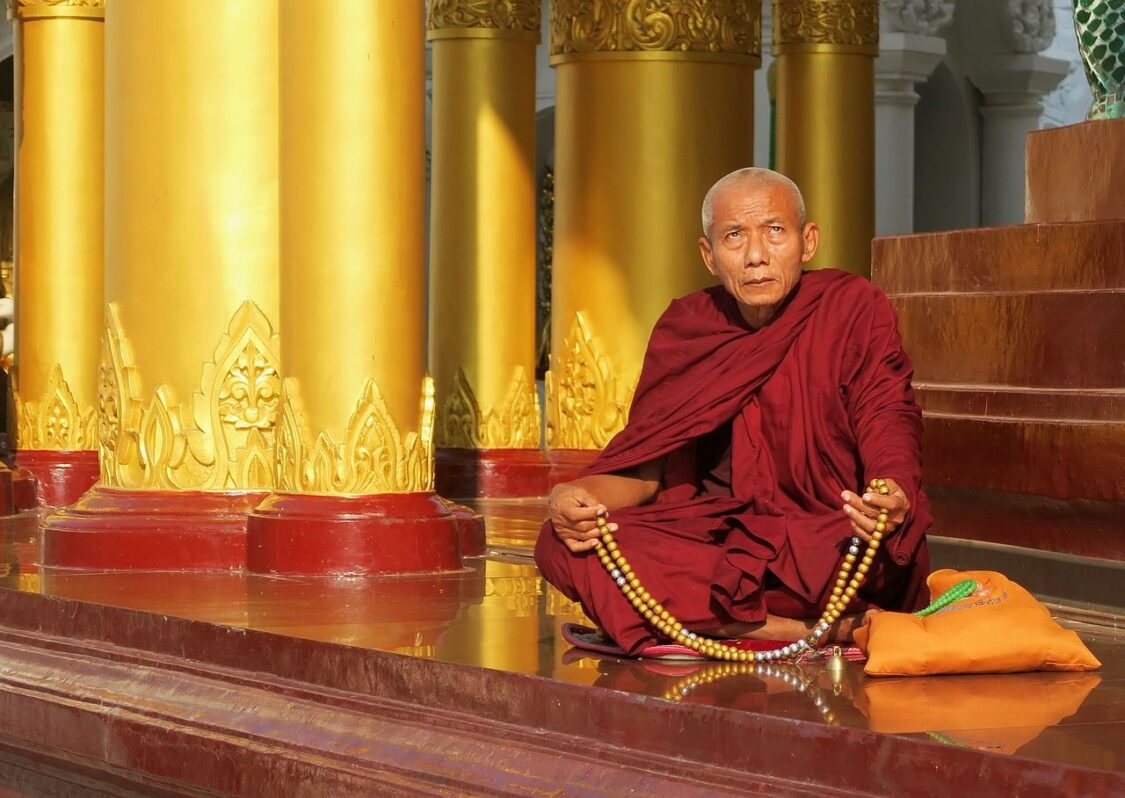
The Symbolism of 108 Prayer Beads in Buddhism
The number of beads on a rosary is significant. Traditional Buddhist prayer beads consist of 108 beads. Among Theravada Buddhists in Thailand, this is said they represent the 108 virtues of the Buddha and Dharma. It’s also described as representing the 108 worldly desires or delusions that the Buddha overcame to attain enlightenment.
There is no specific list of these 108 delusions but they all emerge from the following three aspects:
1. Ignorance (Avidya): Not seeing the world and oneself clearly, misunderstanding the nature of reality.
2. Attachment (Raga): Excessive desire for things that bring pleasure.
3. Aversion (Dvesha): Strong dislike or hatred towards what is unpleasant.
In addition to its symbolic meaning, the number 108 also has mathematical and astronomical significance, which is especially important to Thailand’s mystical Buddhists.
For instance, in Hindu and Buddhist cosmology, it is believed that there are 108 sacred sites or energy centers in the body. These energy centers, known as chakras, are believed to be aligned along the spine and are crucial for our spiritual well-being.
The number 108 is also connected to the lunar cycle and the distance between the Earth and the Sun. The average distance between the Earth and the Sun is about 108 times the Sun’s diameter, while the average distance between the Moon and the Earth is about 108 times the Moon’s diameter. This cosmic connection adds another layer of depth and symbolism to the sacred number 108.
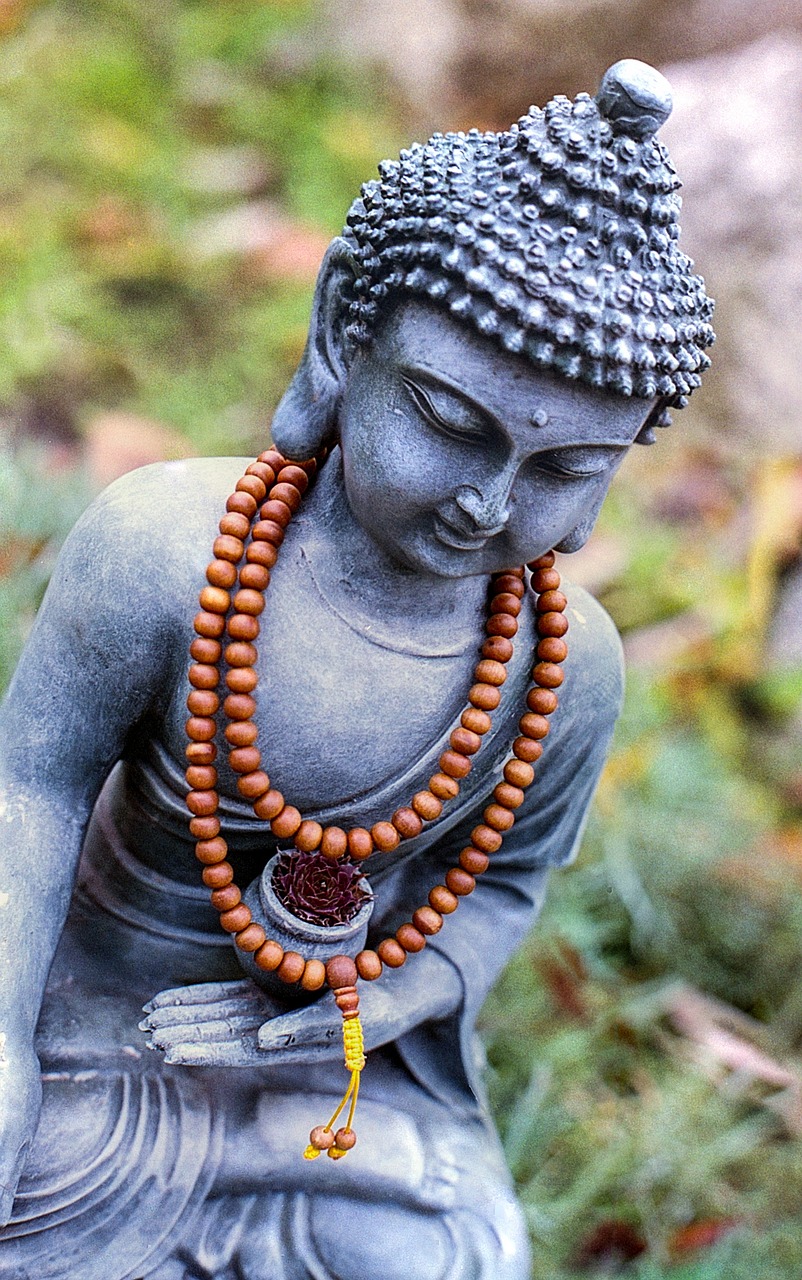
Different types of Buddhist Prayer Beads in Thailand
Buddhist prayer beads come in a variety of types and materials in Thailand, each with its own unique qualities and symbolism. The most common type of prayer beads are made from wood, such as sandalwood, bamboo, or rosewood. These beads are known for their earthy and grounding energy, making them ideal for meditation and spiritual practice.
Long ago in the Ayutthaya and Rattanakosin periods, nobles and revered monks in Thailand would sometimes use rosary beads made of ivory, gold, or teak. Teak prayer beads are still sold in Thailand, but are more expensive than the other types of wooden prayer beads.
You also can find beads made from black onyx and jade (which are materials especially popular among those Thais who use the beads as an adornment or talisman).
In addition, there are prayer beads made from gemstones and crystals. Each gemstone is associated with specific qualities or intentions, which can enhance the practitioner’s meditation practice. For example, amethyst is believed to promote calmness and spiritual insight, while rose quartz is associated with love and compassion.
Most Thai prayer beads feature a guru bead or small amulet, which is larger and often made from a different material than the rest of the beads. This is serves as a marker for the beginning and end of the rosary, reminding the practitioner of their intention and guiding them through their practice.
In Thailand, the small amulet used for this purpose will often have been made at a Thai temple that specializes in making Buddhist amulets, known as Phra Khreuang (พระเครื่อง).
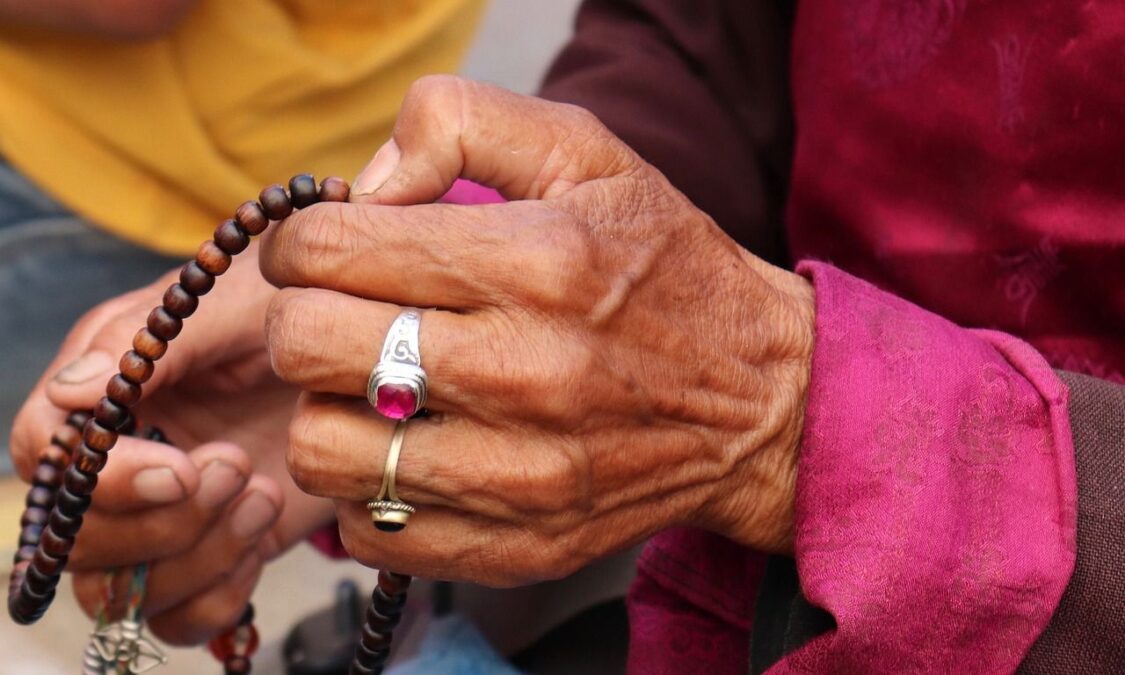
How to Use Thai Rosary Beads for Meditation
Using Buddhist prayer beads is a simple yet powerful way to practice meditation in Thailand. To begin, find a comfortable seated position and hold the rosary in your right hand, with the beads draped over your middle or ring finger. You don’t need to sit cross-legged like Thai monks effortlessly do.
Start at the guru bead or amulet and begin reciting your chosen mantra or prayer, moving from one bead to the next with each repetition. As you move from bead to bead, allow your mind to focus on the sound of the Thai mantra and the prayers you wish realized.
With each repetition, let go of any distractions or thoughts that arise, and bring your attention back to the present moment. The rhythmic motion of moving from bead to bead can help to calm the mind and deepen your meditation experience.
It is important to maintain a relaxed and gentle grip on the Thai rosary beads, allowing them to flow naturally through your fingers. Avoid gripping or pulling the beads too tightly, as this can create tension in the body and disrupt the flow of your meditation practice.
The Use of Buddhist Prayer Beads Outside Thailand
Beyond Thailand, the use of Buddhist prayer beads varies. For example, in Tibetan Buddhism, prayer beads are often larger and made from materials like yak bone or coral. These beads are used for counting mantras and are believed to carry the blessings of the deities.
In Zen Buddhism, on the other hand, prayer beads are typically smaller and made from materials like wood or stone. They are used for counting breaths during meditation, rather than reciting specific mantras. The focus in Zen practice is on mindfulness and being fully present in the moment.
In Pure Land Buddhism (which is practiced in countries such as Japan and Korea is focused on achieving rebirth in a Buddha’s “pure land” or buddha-field) prayer beads are used as a way to connect with the Buddha Amitabha (the principal Buddha of the Pure Land) while practitioners recite his name as a form of devotion. These rosary beads are often made from materials like lotus seeds or Bodhi seeds, which are believed to have auspicious qualities.
- Affirmations in Buddhism & Thailand - June 7, 2025
- Speak Thai Naturally Without the Gymnastics - April 20, 2025
- The Best Learn Thai Podcast and YouTube Channel - April 10, 2025

